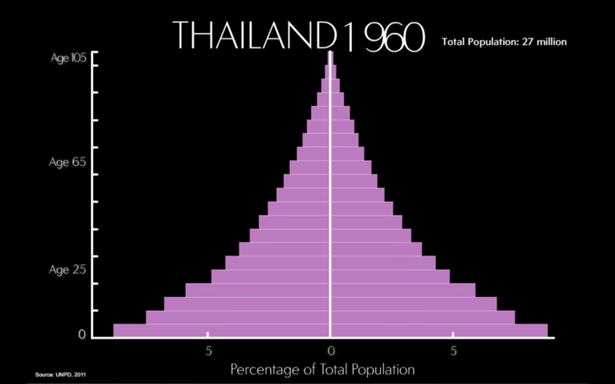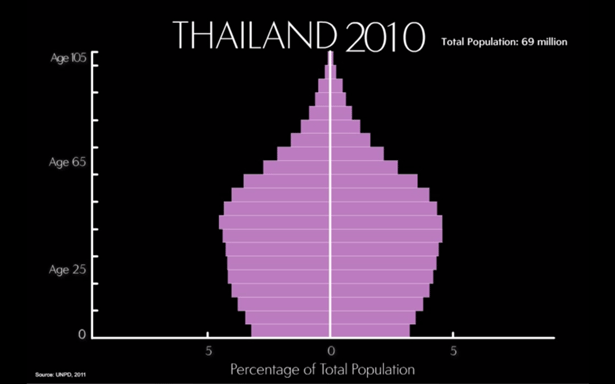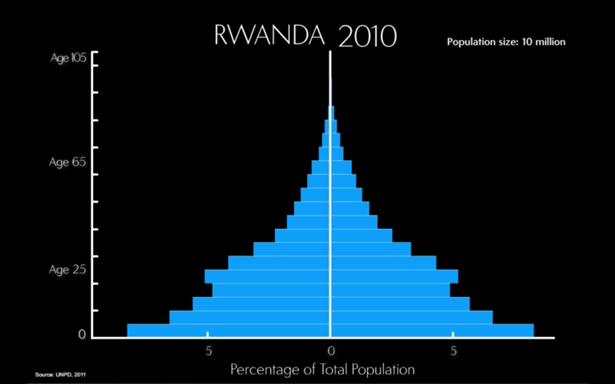-
Harnessing the Demographic Dividend: PRB’s ENGAGE Presentations Look to Empower, Educate
August 12, 2013 By Carolyn LamereThe demographic dividend – the idea that a decline from high to low rates of population growth can lead to dramatic economic gains – has become something of a buzzword in development circles. Sub-Saharan Africa holds the single largest block of remaining high fertility countries and while headlines tend towards the dramatic about demographic shifts there, less column space has been devoted to examining the underlying issues causing these shifts or the other changes that will be necessary for countries to benefit from them.
A new ENGAGE presentation created by the Population Reference Bureau (PRB), “Harnessing the Demographic Dividend,” looks at countries that have benefited from the demographic dividend in the past as well as African countries which may be poised to experience it in the future, focusing on the investments needed for countries to work demographic shifts to their advantage.
A Brief History of the Demographic Dividend
To see how the demographic dividend has played out in the past, the presentation first focuses on Thailand. In 1960, fertility in Thailand was high; women on average had more than six children each and over 40 percent of the population was under the age of 15, amounting to almost 12 million children.
These large families meant there were large numbers of dependents who were supported by a relatively small proportion of working people.
But over the course of the next 50 years, mortality rates declined; desire for smaller families increased; and investments in family planning enabled rapid declines in fertility. Total fertility rate fell from 6.1 children per woman in 1960 to around 1.4 in 2010.


These major changes meant that Thailand’s proportion of working-age adults increased relative to its percentage of dependents, creating the conditions of a demographic dividend. The labor supply increased, leading to more production, and working adults with fewer children were able to save more, allowing for greater investment in the growing economy.
By increasing access to health services, including contraception, African countries with similar age structures to Thailand’s in 1960 have begun to make progress in reducing fertility as well – though not as quickly. This may mean that the demographic dividend is further off in Africa than many expect.
For example, Rwanda’s fertility rate has fallen from 8.0 in 1950 to 4.6 today, according to the UN. Forty percent of the population of Rwanda is currently under the age of 15, similar to Thailand in 1960. But despite the fact that Rwanda is an outlier in sub-Saharan Africa for how quickly its fertility rate is declining, its chance for a demographic dividend is likely still decades off. Even if fertility in Rwanda declines to close to three children per woman over the next 20 years, as projected by the UN’s most optimistic models, 35 percent of the population will still be under the age of 15.
Investments Beyond Family Planning
For Rwanda and other countries with similar age structures in sub-Saharan Africa to realize the demographic dividend in the future, policymakers need to begin investing now.
Some of these investments are obvious. To allow couples to act on a desire for smaller family sizes, as they did in Thailand, they need access to affordable contraception. Other investments are less intuitive. The presentation focuses on four areas of investment – health, education, economic, and good governance – as keys to achieving the demographic dividend.
Investments in health lead to increased child survival, which contribute to a desire for smaller family sizes. Healthy populations are also better equipped to enter the labor force and boost the economy. And providing for the healthy growth and development of children provides for the continued growth of the economy for generations to come.
Similarly, education is critical to developing a productive workforce. Investments in education can have quick returns for families, because each year of schooling is associated with an increase in wages of up to 10 percent, according to data from the World Bank. Investing in girls’ education in particular can have a positive feedback loop in initiating fertility decline: Girls who are in school are more likely to delay early marriage and have more opportunities to participate in the labor force.
As large generations of young people move into the workforce, governments also need to invest in their economies. Some industries, like manufacturing, can be good sources of jobs but need substantial investments in infrastructure to absorb the new, larger working population. Finding jobs for a growing population has been a continual challenge in Pakistan, for example, which despite a large, youthful population has yet to achieve a demographic dividend.
Finally, good governance – rule of law, stability, security, efficiency, accountability, and strong and transparent institutions – is critical to help changes in age structure effect a positive change in the economy. Without effective governance, countries will be unable to make the investments in health, education, and the economy necessary to accrue benefits from the dividend.
Effectively Communicating to Affect Change
“Harnessing the Demographic Dividend” is intended to help advocates and analysts educate high-level audiences, especially in sub-Saharan Africa, about the demographic dividend and the investments governments must make to reap the benefits.
The ENGAGE series of presentations, which also includes videos on youth and gender, user’s guides, handouts, and sample questions that presenters should be ready to answer, are designed to be used as clear, concise teaching tools. ENGAGE presentations have reached 12,500 stakeholders over the past five years, including politicians, civil society leaders, and members of the media. Some focus on a specific country, like Kenya or Malawi, while others are more regional or global in scope. The presentations are designed to present new perspectives in a new format, to promote dialogue in a visually stimulating way, and to encourage stakeholders to enter into critical conversations about important population issues.
But the demographic dividend is about more than just numbers. In describing related issues like education and economic investments, “Harnessing the Demographic Dividend” reminds viewers that people live integrated lives, and it is only by addressing multiple, interconnected factors that governments can lay the foundation for growth driven by the demographic dividend.
Carolyn Lamere is a program assistant at the Population Reference Bureau.
Sources: The Economist, National Bureau of Economic Research, Population Reference Bureau, Reuters, UN Population Division, World Bank.
Video and Charts Credit: Population Reference Bureau.
Topics: Africa, demography, development, economics, family planning, featured, gender, global health, Guest Contributor, Kenya, Malawi, Pakistan, population, Rwanda, Thailand, UN, video, youth
 A Publication of the Stimson Center.
A Publication of the Stimson Center.





